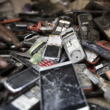Energizing villages, women, families
By Tri Mumpuni |
By many measures, Indonesia is making significant economic progress. According to the World Bank, 17.8 percent of Indonesians lived below the poverty line in 2006, but this number has now decreased to 12 percent. The country's economy, now the world's 16th-largest, could become the seventh-largest by 2030. The management consulting firm McKinsey & Company reports that 45 million of Indonesia's 240 million people belong to the consuming class, a number projected to grow to 170 million within less than two decades. Indonesia is also urbanizing rapidly: 53 percent of the population lives in cities, with 71 percent expected to do so by 2030.
But what do these aggregate figures mean for Indonesians — particularly rural women — whose lives have not been touched so far by growing prosperity? When it comes to energy issues, nothing.
Indonesia is a nation where many energy sources are viable, yet the electrification rate is only 57 percent. And where energy resources are deficient, especially in villages, it is women who suffer most. It is their job to collect firewood, which is the main source of energy for most families. They prepare the food and procure the drinking water, tasks that can be very difficult when modern energy services are not available. In a traditional Indonesian family, and especially in rural communities, women are the backbone of a family's economic well-being, and women face the greatest burdens when modern energy isn't available.
IBEKA, the nongovernmental organization of which I am executive director, focuses primarily on rural development. Mainly, it helps rural areas reach their economic potential by equipping them with appropriate energy technologies. IBEKA also seeks to protect the environment and build awareness of the importance of environmental issues in development.
Renewable energy can be provided by, among other technologies, wind turbines, solar panels, and biogas. But in Indonesia, a country blessed with enormous water resources, it is microhydro — utilizing water at the smallest scales to generate electricity — that is often most appropriate.
Microhydro projects can be established according to two main schemes. The first is to generate power for a stand-alone power plant that is not connected to the national grid. Such a system is built by a community for its own use; the community is involved in planning from the earliest stages and becomes responsible, after receiving technical and managerial training, for management, operation, and maintenance; and it is the community that ultimately owns the system.
The electricity generated satisfies basic lighting needs, but village women also utilize electricity for agricultural functions like making patchouli oil and lemon grass oil, roasting and grinding coffee, drying cacao, and so forth. Women form cooperative business groups that give them the legal standing to deal on an equal footing with other parties. New income is generated and families' welfare can be assured.
The other scheme is a grid-connection scheme — a village that is already connected to the grid establishes a microhydro facility so that it can sell its excess electricity. The money goes to a village development fund overseen by residents and operated on a consensus basis. In the West Java village of Cinta Mekar, where a microhydro facility was built in 2004 with assistance from IBEKA and others, income is used for village health care, scholarships, seed capital, and other development-related purposes. The cooperative that manages the fund is headed by a woman; the secretary and treasurer are women as well. These women have the community's trust, and the influence of women throughout the project is very strong.
In a rural village, it is often easiest to develop an infrastructure system if one seeks the heavy involvement of women from the start — because once the infrastructure is in place, it is often women who benefit most. But entire families benefit in a newly electrified village when women are freed from having to gather firewood, fetch water, and perform other menial tasks. Energizing rural areas energizes women; energizing women energizes families.















